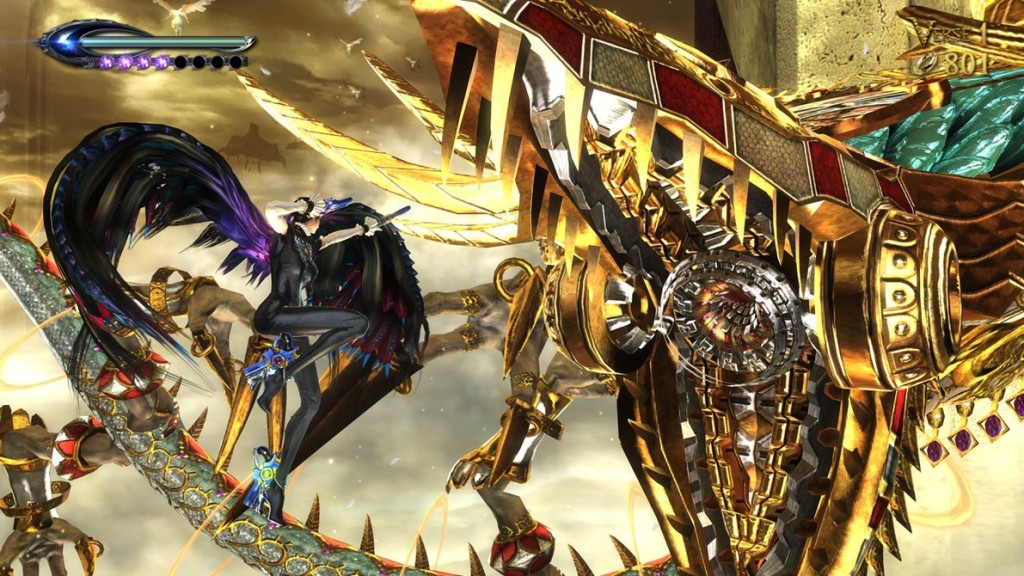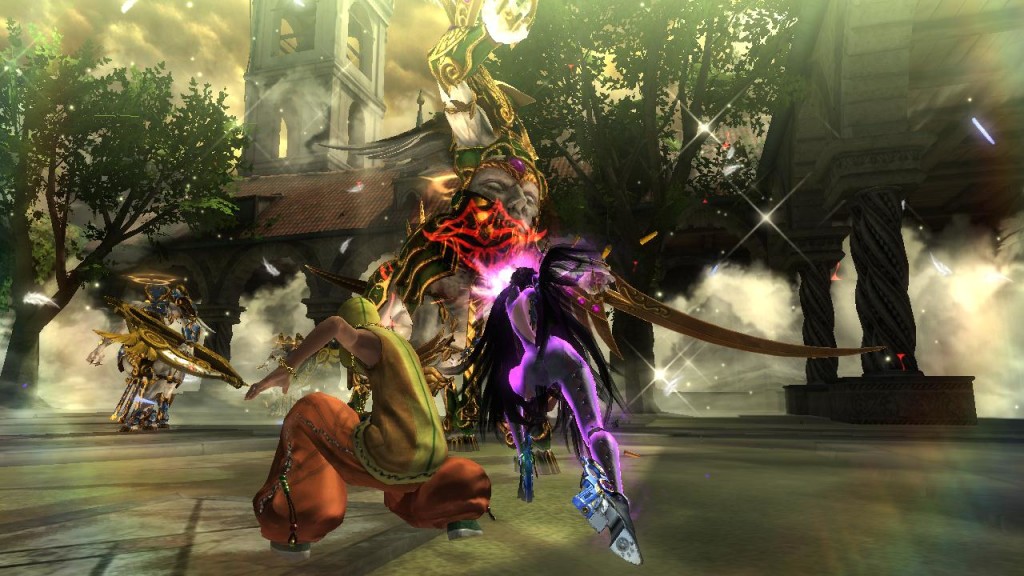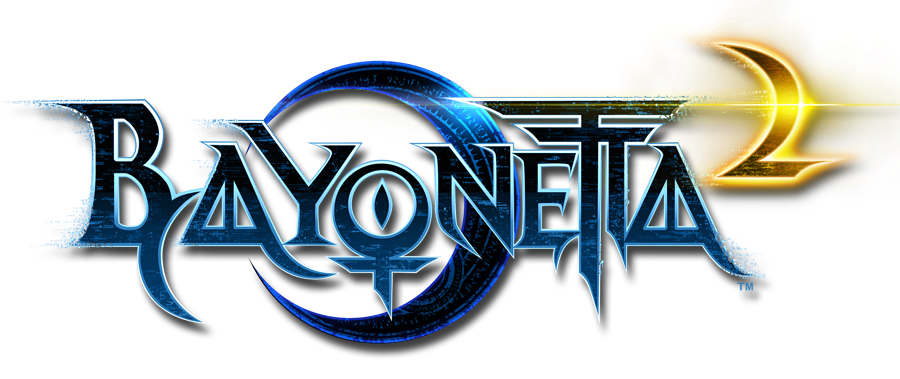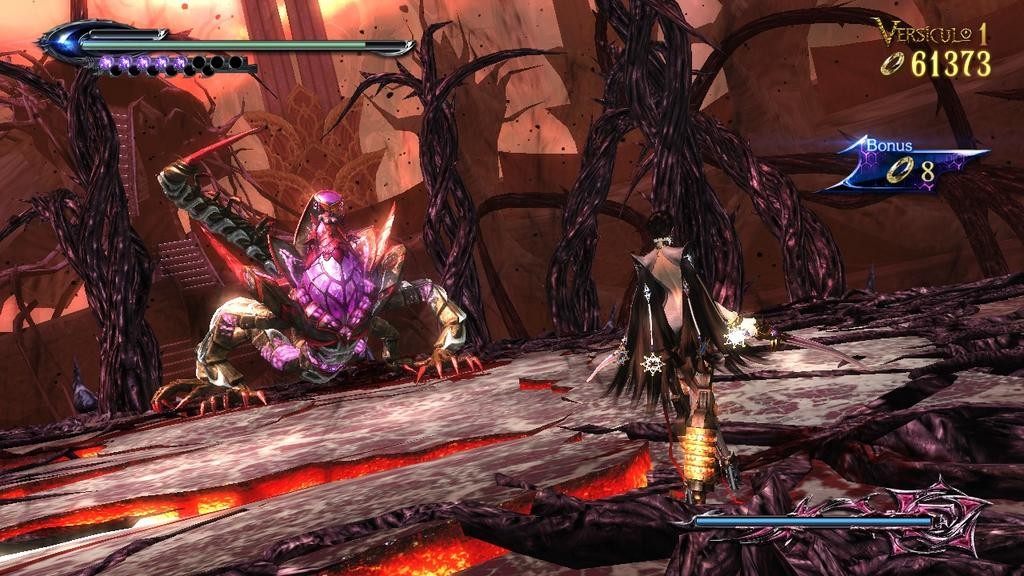Last updated on November 19, 2015
Since we are talking about the camera, said camera can sometimes swing wildly, making it difficult to see where you are or what you’re doing. The game will make the object blocking you transparent if it lies in Bayonetta’s way; this includes enemies, who will continue to attack. You won’t be able to read their tells, and thus you will take damage. The Alarune fight highlights this in its second phase, for whatever reason, and it happens rather frequently on larger enemies in enclosed spaces. That’s a rarity in this game, given the “arena” design of most combat scenarios, but it remains notable nonetheless. This happened in Bayonetta 1 as well, so I wouldn’t consider this a major flaw by any means, but it’s something to work around.
Perhaps my biggest disappointment comes from the story mode. The whole Story pacing feels…off, all things considered. For one thing, it seems super serious by comparison with the first, but that’s irrelevant to most people since the plot rarely makes much sense anyway. There’s a ton of boss fights that take up a whole chapter (out of a grand total of 16 or so), which means more than a 1/4 of the “chapters” are actually one fight wonders. Some of those cheat a little, with a few combat sequences before yet another boss! It’s a bit of a shame, really, as the bosses themselves present little challenge – to finish, anyway. Many of them follow the same basic 1-on-1 fight with little additions. The first game, admittedly, used the “super big enemy” trope a bit too much, mostly requiring a host of platforming, quick timer events, and targeting weakpoints. Still, because they were staged well in phases and constantly made the boss switch tactics (up until its final “desperation” form, cued with unique music and all), it ended up making them exciting and interesting even on higher difficulties.
The boss fights in Bayonetta 2, on the other hand, simply don’t showcase enough variety. Attack constantly, wait until the boss dodges or does an attack, dodge it and activiate Witch Time, rinse and repeat. There’s just not enough variation, and while they seem dynamic at first, they offer little variation or change in approach. That even goes for the last boss, which I found incredibly disappointing due to it following this same formula (just comparing Jubileus by tactics and scale colors my mood a dark shade of blue). I ended up with a Platinum on the last stage, which absolutely baffles me, considering how difficult such an encounter should be. I had learned the patterns so well at that point that it really wasn’t a stretch; they gave me plenty of opportunities to master the same combat over and over again, that’s for sure. Thankfully, there’s no one-hit death quick timer events, so that’s a huge improvement.

The larger bosses in Bayonetta 2, on the other hand, seem borderline obsessed with “Bayonetta with wings!”. The Dragonball Z, anime-combat vibe comes to the fore, and while air combat function identically to ground combat, it still presents plenty of opportunity for gigantic bosses with interesting designs. I consider these the better, more interesting fights overall, and they present one of the few moments in Bayonetta 2 that generally surprised me with their craziness. Who said Platinum Games doesn’t surprise? I’m just sad that these instances come up far too frequently, and the 1-on-1 rival fights remain supreme.
This, then, highlights another problem (and the issue with all sequels): the “over the top” stuff comes in right from the beginning, meaning there’s no real crescendo of crazy action. Hashimoto himself said that “we want you to feel like you’re fighting the last boss from the beginning’, but the lack of actual dynamics means everything feels rather than same after a while. Much of it just blurs together after a while, and there’s little contrast so that it has impact. It all feels uneven at best, and thrown together to best the first game’s intensity at worst. More does not always equal better, and I am kinda sad to say I didn’t find many of the “crazy” event scenes all that exciting. Predictable, more like. Some stages just take far too long, and others re-use assets and entire layouts from other stages like they’re going out of style. That’s hardly a problem in a game like this, but it’s noticeable – in fact, I wouldn’t be surprised if the budget actually hit a much lower number than we’ve been led to believe.

There’s lots of exposition in the beginning, and that’s exacerbated by giant, wide open areas that hides tons of goodies. You may want to get them, but wandering around while figuring out what the developers hid does rob the game of its narrative urgency (not that it matters). Stages are also designed less like incidental, organic combat scenarios like in the first Bayonetta, and more like an obvious arena for combat. It’s hard to put this into words, but stages are often pretty clear and distinct in indicating when and where you will fight. It takes away a bit of the surprise, really, when you scope out a fight right away when entering a room. Furthermore, the Muspelheim portals (which echo the Alfheim portals in Bayonetta 1) just aren’t all that challenging; I completed most of them in one shot, unlike the super specific challenges of the Alfheim portals. There’s also far too many of them, which clearly shows the budget constraints when tons of combat takes place in the same darn arena.
In fact, the game overall presents little challenge on the default difficulty; most enemies do little damage to you, and the absolute deluge of power ups scattered in stages mean you’re rarely left wanting for health or magic. I refuse to use items for scoring purposes (both here and in the original), but you could totally item spam through much of the game even with the limit on lollipop numbers, no less! I can’t imagine most gamers having any problems with it. Apparently item use no longer proves a detriment to scoring, which makes no sense to me at all. Bayonetta’s all about scoring, and now that actually poses less challenge than before! Give the invincibility powerups you could manufacture, that just strikes me as poor design. Of course, to grind these items up takes a certain kind of dedication, and you’d blow through a ton of these, so perhaps it isn’t as broken as I think.
Platinum Games tries to ameliorate this somewhat by letting you choose 3rd Climax mode right off the bat, but this spells a recipe for disaster without some powerups on hand. I imagine that’s why they locked it on the first game, right? The difficulty levels are, functionally, the same as the first game with minor changes to enemy behavior in terms of aggression, but no fundamental change. The second time, unsurprising, requires a much greater understanding of the game mechanics than the first, as does Bayonetta 2’s Infinite Climax Mode (which finally changes all the enemy layouts). The progression from each difficulty remains just as fun as the first game, not surprisingly! With that said, the progression just isn’t as neatly designed, unfortunately.


